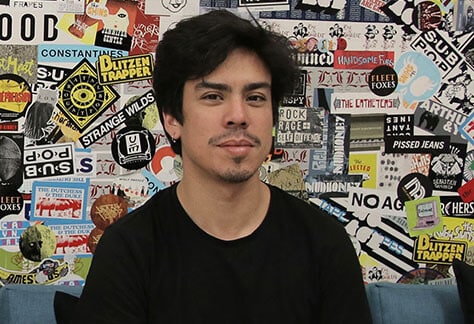SANTIAGO, Chile — RDF Media, formerly 13 Radios, is a Chilean radio conglomerate that is part of Canal 13, a subsidiary of the Chilean holding company Grupo Luksic.
Today the private broadcaster owns four stations, Oasis, Sonar, Play and Tele13 Radio. It also heads the country’s largest podcast platform, Emisor Podcasting.
The story of RDF Media is unique. Its beginning dates back to 2005, when the Pontificia Universidad Católica de Chile received 100% of Compañía Radio Chilena S.A. from the Archbishop’s Office of Santiago, the owner of Radio Chilena in Santiago.
Gradual Expansion
In 2006, the new owners decided to close Radio Chilena due to high operating costs and replace it with Canal 13. In doing so, the goal was to launch a new station that could offer an alternative to a market already saturated with Hispanic-American pop music. That’s when Play FM began broadcasting on 100.9 FM, targeting females between the ages of 25 and 40.
Then, in 2009, Canal 13 acquired X FM and turned it into Sonar FM. With a rock and pop format, the station’s focus is males in the 25- to 49-year age bracket. The corporation added Oasis, with pop-classic music for adults in 2013, and in 2015 it unveiled Tele13 Radio on 103.3 MHz in Santiago.
Available nationwide through cable and via the internet, Tele13 Radio airs information and takes its name from the Canal 13 newscast, Tele13. In addition to broadcasting on FM and the internet, the media house has also developed specific apps for its audience as well as leveraging social media platforms.
Judging from RDF Media’s swift growth, the broadcaster is clearly no amateur when it comes to strategic development. Juan Ignacio Lara, RDF Media’s producer says he sees radio changing rapidly into a multiplatform medium.
He believes that visual radio and digital services are the pillars to this evolution. And so to follow this tendency and stay at the forefront, he says they decided to offer visual radio and extensive digital coverage through apps, podcast platforms and websites to their audiences. “Our goal is to guarantee a total audio experience but in a digital ecosystem,” he said.
Leading the Pack
It’s a balancing act, Lara adds. “We’ve decided to take the digital path and that’s new for Chile. At the same time, our FM audience is still very important for us. So we also pay careful attention not to exclude those who have been tuning in over the years via FM,” he said.
As part of RDF Media’s strategy to consolidate its multiplatform approach, the media house began using two multiCAM RADIO and STUDIO visual radio production systems in 2018. Three stations (Sonar, Play and Oasis) use the same studio, and the other one (Tele13 Radio) has its own studio. One of the multiCAM systems integrates with a Lawo crystal console, the other with an Axia QOR 32 console. The station also uses a RAMI desk to drive automated camera switching and Dalet automation.
At first glance, Lara says, he felt a bit intimidated by the new setup, mainly because being a radio guy, he wasn’t used to working with visual tools. But, he adds: “Thanks to the multiCAM team, in particular Jennifer Vingadassalon, multiCAM sales representative for Latin America, I was able to swiftly understand and consequently teach my team how to use it in the easiest possible way.”
Lara explains that before taking delivery of the visual production systems, they only provided basic and “not very attractive graphics” to their audience. “We also needed a huge workforce just to get very average results.”
He says that today things have changed for the better. “It’s great – we’re able to offer quality video productions. And we don’t need to have somebody behind the screen all the time! This has totally transformed the way we work.” In addition, he adds that even their radio producers who previously “knew nothing about TV or visual radio,” can now easily create quality audiovisual broadcasts and compelling content.
Adding visual to a radio station has been a global tendency for a few years now, explains Lara. “But if a radio is going to add these services, they need to ensure they’re doing it the right way to improve audience experience,” he said. He adds that their strategy was to take it “one step at a time,” and that it’s paid off for them, slowly evolving their digital and visual offerings.
“Before we were observing the radio industry’s transition from the sidelines and weren’t quite sure how to keep up. But the visual aspect has made our lives easier and now we have more business options,” he said.
“Our audience actually can see us, they know what our faces look like, and that really brings us closer to them. Today, thanks to the new setup we’re able to better interact with and serve our audience. The visual production systems have also eased our digital workflow, so overall we’re making better content and able to easily and quickly share it over multiple platforms.”

